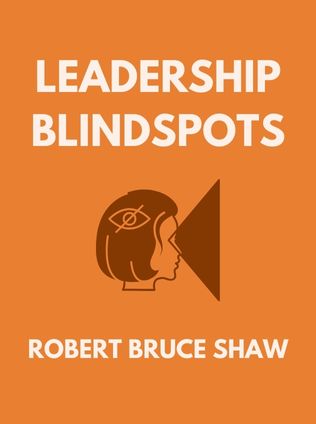
Leadership Blindspots
How Successful Leaders Identify and Overcome the Weaknesses That Matter
By Robert Bruce Shaw
Published 04/2014
About the Author
Robert Bruce Shaw is a seasoned expert in the field of organizational behavior and leadership development. With a Ph.D. from Yale University, Shaw has dedicated his career to working with senior executives across various industries, including pharmaceuticals, financial services, and technology. His extensive experience has made him a sought-after consultant for strategic organizational change and leadership development. Shaw's deep understanding of the complexities of leadership and his ability to offer practical, actionable advice are evident in his work, including his seminal book, "Leadership Blindspots: How Successful Leaders Identify and Overcome the Weaknesses That Matter."
Main Idea
The central premise of "Leadership Blindspots" is that effective leadership requires the recognition and management of one's own vulnerabilities. Shaw argues that blindspots—unrecognized weaknesses or threats—can significantly impair a leader's effectiveness and success. These blindspots are often juxtaposed with a leader's strengths, making them particularly insidious. By identifying and addressing these blindspots, leaders can avoid the pitfalls of overconfidence and maintain a balanced approach that fosters continuous improvement and resilience.
Table of Contents
- Introduction
- Why Blindspots Matter
- The Dangers and Rewards of Being Blind
- Balancing Confidence and Doubt
- How to Spot Blindspots in Yourself and Others
- The Common Blindspots Holding Leaders Back
- How to Surface and Overcome Blindspots
- Develop Peripheral Vision and See What Others Miss
- Build a Network of Trusted Advisors
- Promote Productive Team Fights on the Vital Few Priorities
Introduction
Shaw introduces the concept of leadership blindspots, emphasizing their distinction from other forms of unrecognized threats, such as black swan events. Blindspots are not unpredictable; they are avoidable if one actively seeks them out. Shaw underscores the importance of understanding and managing these blindspots as a key to effective leadership. The book sets the stage for a deep dive into the nature of blindspots and offers strategies to recognize and address them.
Why Blindspots Matter
Blindspots are critical because they pose significant risks to a leader's success. Shaw highlights that even the most talented leaders can be undermined by a single blindspot. These unrecognized weaknesses can detach leaders from reality, leading to poor decision-making and negative impacts on their organizations. The persistence of blindspots necessitates ongoing vigilance and a commitment to self-awareness.
“A single blindspot in a critical area can undercut even the most talented leader.” - Robert Bruce Shaw
The Dangers and Rewards of Being Blind
Successful leaders must balance confidence with humility. Shaw illustrates this balance by discussing the dual needs of acting with conviction while remaining aware of one's limitations. Overconfidence can lead to blind arrogance, while excessive doubt can result in inaction. Finding the optimal margin of illusion—a slight positive distortion about oneself—can motivate leaders to take necessary risks while maintaining awareness of potential pitfalls.
“I strive to be confident enough to convince people that I am in charge but humble enough to realize that I am often going to be wrong.” - Bob Sutton
Balancing Confidence and Doubt
Shaw delves into the complex relationship between confidence and doubt, describing how they often conflict within a leader. He explains that a positive bias can be beneficial, as it drives motivation and perseverance. However, too many blindspots can lead to dangerous overconfidence, while too few can result in paralyzing realism. Leaders must manage the tension between believing in themselves and acknowledging their limitations.
“An optimal margin of illusion occurs when individuals have a small, positive distortion about themselves.” - Robert Bruce Shaw
How to Spot Blindspots in Yourself and Others
Recognizing blindspots requires a deep sense of self-awareness. Shaw identifies four types of leadership awareness:
- Known Strengths: You know what you know.
- Known Weaknesses: You know what you don't know.
- Unknown Strengths: You don't know what you know.
- Blindspots: You don't know what you don't know.
Blindspots are particularly dangerous because they are areas of unrecognized weakness. Shaw emphasizes the importance of becoming more aware of these blindspots to take corrective action and improve leadership effectiveness.
Sign up for FREE and get access to 1,400+ books summaries.
You May Also Like
The Subtle Art of Not Giving a F*ck
A Counterintuitive Approach to Living a Good Life
By Mark MansonRich Dad Poor Dad
What the Rich Teach Their Kids About Money - That the Poor and Middle Class Do Not!
By Robert T. KiyosakiHow To Win Friends and Influence People
The All-Time Classic Manual Of People Skills
By Dale CarnegieFreakonomics
A Rogue Economist Explores the Hidden Side of Everything
By Steven D. Levitt and Stephen J. Dubner



















